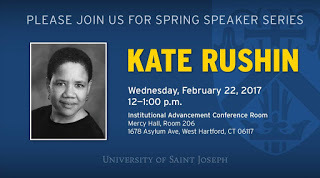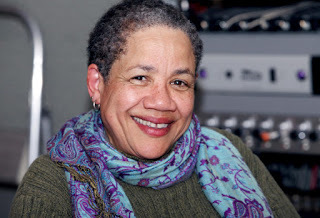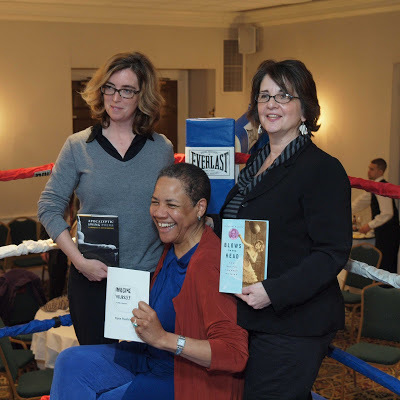Andy Thibault's Blog, page 16
March 2, 2017
Protecting Our Houses of Worship: Guest Column by Security Expert / Retired NYPD Detective Sergeant
By ALAN SCHISSEL
Founder & Chief Executive Officer
Integrated Security Services
 According to the Washington Post, “it’s been a bad 2017 for Jews.” During the month of January, 48 bomb threats were called in to Jewish community centers across the country. Also last month, a neo-Nazi made national news by promising to hold a march in Whitefish, Montana to intimidate the town’s small Jewish population.
According to the Washington Post, “it’s been a bad 2017 for Jews.” During the month of January, 48 bomb threats were called in to Jewish community centers across the country. Also last month, a neo-Nazi made national news by promising to hold a march in Whitefish, Montana to intimidate the town’s small Jewish population. This, of course, was followed by another unprecedented press conference by our President during which two reporters were moved to ask Mr. Trump about the rise in anti-Semitism. Many of us were aghast at the President’s rude and dismissive response, and his unwillingness to address the question seriously. The fact is, the country is experiencing an alarming increase of anti-Semitic incidents, and this has been trending upward since 2015. A security report issued by the Department of Homeland Security on protecting houses of worship stated that the United States has approximately 345,000 religious congregations representing 230 denominational groups and roughly 150 million members. Despite being sanctuaries from the troubles of the world, houses of worship have also been targets as violence has spiked across the country in recent years. The killing of nine people at Emanuel A.M.E. Church in Charleston, South Carolina was the largest mass shooting in a house of worship since 1991, when nine people were shot at the Wat Promkunaram Buddhist temple in Waddell, Arizona, northwest of Phoenix.
[Under relentless pressure, the President subsequently denounced anti-Semitism.]
Empathy and action: Muslims unite to help fix vandalized Jewish cemeteries
The intent of this column is to generate awareness and provide a short guide which contains security practices for religious institutions, parishioners and our non religious communities to help deter threats, mitigate hazards and risks, and minimize the damage caused by an incident in or around a house of worship, including mass casualty events.
I preface with the word “short” because there is a wide range of methods from programmatic and procedural considerations to technological enhancements that religious facilities and their leadership may consider implementing based upon the most likely threats to their facilities and their available resources. Basic security principals would suggest taking a blended approach to security and safety with the goal of hardening the facility to deter, detect and/or delay a criminal occurrence before it happens. The next steps are equally important and this is where lives are saved and mass casualties are reduced. Selecting the appropriate response to a threat or armed intrusion will help facilitate a safe transition into an effective recovery and restoration of services mode.
Identifying Your Threats & Vulnerabilities
Identifying and evaluating a known or potential threat to a given facility is the first step of a security assessment. The results of which will guide the process of developing a security plan. A proper readiness plan will aim to deter a threat or mitigate a threat by reducing the religious facility’s vulnerability to those threats.
Natural Hazards vs. Targeted Violence
As stated before, all life safety solutions should be designed using a blended approach to managing risk. Protecting a religious facility means your emergency management plan(s) must address an all-hazard approach to both natural hazards, e.g., infectious diseases and illnesses, fire, and seismic and weather-related events (hurricanes, tornadoes, flash floods) as well as targeted attacks. Spontaneous and pre-planned attacks are likely to occur by individual(s) who use firearms; improvised explosive devices (IEDs); vehicle-borne improvised explosive devices (VBIEDs); chemical, biological, or radiological attacks; or arson in order to inflict a number of casualties and damage to religious facilities.
Protective Measures
As previously mentioned earlier, a house of worship environment is managed by creating layers of protective measures in collaboration with state and local partners that allow religious institutions to deter, detect and delay threats. These layers also allow an institution to consider a threat as soon as possible and to more effectively respond to, further deter, eliminate or mitigate that threat.
• Technological sensors such as CCTV surveillance cameras or alarms (fire, smoke, wind, and intrusion detection) will trigger informed decision-making.
• Barriers, such as locked doors or fixed barriers or uniform security personnel should be in place to deter or delay a threat and afford more time for effective decision making.
• Having the correct inbound and outbound communication network in place will influence a number key decisions. Time, or the lack of time, is a principle disrupter of effective decision-making. Sound communication strategies such as emergency email blasts, voice activated alert systems, and silent alert systems help to improve response to and during a crisis. An effective communication protocol should expand the window of time available to leaders to make sound decisions.
Additional Measures to Consider:
• Reporting Procedures
• Establishing Collaborative Planning Teams
• Starting an Emergency Operations Plan
• Define Roles and Responsibilities
• Notification Procedures
• Evacuation Lockdown and Shelter‐In‐Place Policies and Procedures
• Plans for Diverse Needs of Children and Staff
• Necessary Equipment and Supplies
• Common Vocabulary
• Emergency Drills
Call us at (212) 808-4153, or write us to tell what you think or how we can be of more assistance and remember, always dial 911 first in an emergency!

Integrated Security Services
About Alan Schissel
Tweet
Cool Justice Editor’s Note: By way of disclosure, Cool Justice is an occasional denizen of Integrated’s Hartford office and once in a while even does a little work …
more COOL JUSTICE
Cool Justice Blog
Published on March 02, 2017 05:49
Guest Column by Security Expert / Retired NYPD Detective Sergeant : Protecting Our Houses of Worship
By ALAN SCHISSEL
Founder & Chief Executive Officer
Integrated Security Services
 According to the Washington Post, “it’s been a bad 2017 for Jews.” During the month of January, 48 bomb threats were called in to Jewish community centers across the country. Also last month, a neo-Nazi made national news by promising to hold a march in Whitefish, Montana to intimidate the town’s small Jewish population.
According to the Washington Post, “it’s been a bad 2017 for Jews.” During the month of January, 48 bomb threats were called in to Jewish community centers across the country. Also last month, a neo-Nazi made national news by promising to hold a march in Whitefish, Montana to intimidate the town’s small Jewish population. This, of course, was followed by another unprecedented press conference by our President during which two reporters were moved to ask Mr. Trump about the rise in anti-Semitism. Many of us were aghast at the President’s rude and dismissive response, and his unwillingness to address the question seriously. The fact is, the country is experiencing an alarming increase of anti-Semitic incidents, and this has been trending upward since 2015. A security report issued by the Department of Homeland Security on protecting houses of worship stated that the United States has approximately 345,000 religious congregations representing 230 denominational groups and roughly 150 million members. Despite being sanctuaries from the troubles of the world, houses of worship have also been targets as violence has spiked across the country in recent years. The killing of nine people at Emanuel A.M.E. Church in Charleston, South Carolina was the largest mass shooting in a house of worship since 1991, when nine people were shot at the Wat Promkunaram Buddhist temple in Waddell, Arizona, northwest of Phoenix.
[Under relentless pressure, the President subsequently denounced anti-Semitism.]
Empathy and action: Muslims unite to help fix vandalized Jewish cemeteries
The intent of this column is to generate awareness and provide a short guide which contains security practices for religious institutions, parishioners and our non religious communities to help deter threats, mitigate hazards and risks, and minimize the damage caused by an incident in or around a house of worship, including mass casualty events.
I preface with the word “short” because there is a wide range of methods from programmatic and procedural considerations to technological enhancements that religious facilities and their leadership may consider implementing based upon the most likely threats to their facilities and their available resources. Basic security principals would suggest taking a blended approach to security and safety with the goal of hardening the facility to deter, detect and/or delay a criminal occurrence before it happens. The next steps are equally important and this is where lives are saved and mass casualties are reduced. Selecting the appropriate response to a threat or armed intrusion will help facilitate a safe transition into an effective recovery and restoration of services mode.
Identifying Your Threats & Vulnerabilities
Identifying and evaluating a known or potential threat to a given facility is the first step of a security assessment. The results of which will guide the process of developing a security plan. A proper readiness plan will aim to deter a threat or mitigate a threat by reducing the religious facility’s vulnerability to those threats.
Natural Hazards vs. Targeted Violence
As stated before, all life safety solutions should be designed using a blended approach to managing risk. Protecting a religious facility means your emergency management plan(s) must address an all-hazard approach to both natural hazards, e.g., infectious diseases and illnesses, fire, and seismic and weather-related events (hurricanes, tornadoes, flash floods) as well as targeted attacks. Spontaneous and pre-planned attacks are likely to occur by individual(s) who use firearms; improvised explosive devices (IEDs); vehicle-borne improvised explosive devices (VBIEDs); chemical, biological, or radiological attacks; or arson in order to inflict a number of casualties and damage to religious facilities.
Protective Measures
As previously mentioned earlier, a house of worship environment is managed by creating layers of protective measures in collaboration with state and local partners that allow religious institutions to deter, detect and delay threats. These layers also allow an institution to consider a threat as soon as possible and to more effectively respond to, further deter, eliminate or mitigate that threat.
• Technological sensors such as CCTV surveillance cameras or alarms (fire, smoke, wind, and intrusion detection) will trigger informed decision-making.
• Barriers, such as locked doors or fixed barriers or uniform security personnel should be in place to deter or delay a threat and afford more time for effective decision making.
• Having the correct inbound and outbound communication network in place will influence a number key decisions. Time, or the lack of time, is a principle disrupter of effective decision-making. Sound communication strategies such as emergency email blasts, voice activated alert systems, and silent alert systems help to improve response to and during a crisis. An effective communication protocol should expand the window of time available to leaders to make sound decisions.
Additional Measures to Consider:
• Reporting Procedures
• Establishing Collaborative Planning Teams
• Starting an Emergency Operations Plan
• Define Roles and Responsibilities
• Notification Procedures
• Evacuation Lockdown and Shelter‐In‐Place Policies and Procedures
• Plans for Diverse Needs of Children and Staff
• Necessary Equipment and Supplies
• Common Vocabulary
• Emergency Drills
Call us at (212) 808-4153, or write us to tell what you think or how we can be of more assistance and remember, always dial 911 first in an emergency!

Integrated Security Services
About Alan Schissel
Tweet
Cool Justice Editor’s Note: By way of disclosure, Cool Justice is an occasional denizen of Integrated’s Hartford office and once in a while even does a little work …
more COOL JUSTICE
Cool Justice Blog
Published on March 02, 2017 05:49
February 18, 2017
#Hartford Private Eye @JBprivateeye @HuntedCBS Featured @betterct @WFSBnews & @hartfordcourant


We talked to the crew of the show "Hunted" a few weeks ago, now we're chatting with Jacquie Bainer, one of the "hunters" on the show!
Better CT Broadcast

"On 'Hunted,' people are working in real time the way law enforcement does. I'm used to tracking people down and people hiding from me who don't want to talk about the case I'm investigating, but doing this in real time was just thrilling for me."
Hartford Courant Feature
Bainer Twitter Feed
Integrated Security Services
Cool Justice Blog
Published on February 18, 2017 06:05
January 17, 2017
Edna Buchanan, Henry Lee in new documentary about wood chipper case and the movie Fargo #theSHOCKINGTRUTH series
Series explores true stories that inspired popular movies

Shocking Truth
[Fargo - Crafts / wood chipper case]
Post via Internet Movie Database:
Danish flight attendant Helle Crafts goes [mysteriously] missing
Scheduled to air Feb. 27 in Canada / still being edited ...
Series on REELZ in U.S.

Cast

Updates here:

the Shocking Truth

REELZ

Pyramid Productions
Cool Justice Blog
Published on January 17, 2017 21:26
Edna Buchanan, Henry Lee in new documentary about wood chipper case and the movie Fargo

Shocking Truth
[Fargo - Crafts / wood chipper case]
Post via Internet Movie Database:
Danish flight attendant Helle Crafts goes [mysteriously] missing
Scheduled to air Feb. 27 in Canada / still being edited ...

Cast

Cool Justice Blog
Published on January 17, 2017 21:26
December 29, 2016
[updated*] Suggested reading and listening, 2017: THE BLACK BACK-UPS and other poems, by Kate Rushin

University of St. Joseph students, West Hartford, CT,
With Kate Rushin Following Poetry Workshop, 2-22-17 ...



USJ Facebook
USJ Twitter
Upcoming: Kate Reads Friday, Feb. 24 With Nat Reeves Jazz Combo, 'Nat Reeves State of Emergency,'

At The Artists Collective, 1200 Albany Ave. (corner of Woodland Street) in Hartford.
Details

---
Podcast
via

Kate joins Colin’s WNPR Nose panel for discussion of "Manchester By The Sea"


* Ongoing updates to include
upcoming appearances
Plz see links below for poems, articles
Leisure listening, Kate Rushin on NPR
The Bridge Poem
Kate's website
News reports:
Hartford Courant
Harvard Crimson

Photos by BOB THIESFIELD
In photo above the book jacket, Kate fired up a diverse crowd of poets, writers, boxers, students, business leaders, cops and academics with her version of the Ali Shuffle. The event took place Jan. 15, 2010 at The Hartford Club.
Directly above, Kate joins colleagues Gaby Calvocoressi and Binnie Klein, taking a breather after many rounds of poetry and prose. The festivities -- including writing workshops, two bands and a boxing exhibition -- drew about 150 guests to the Hartford Club.
Cool Justice Blog
Published on December 29, 2016 13:17
[updated*] Suggested winter reading, 2017: THE BLACK BACK-UPS and other poems, by Kate Rushin

NEW,
via

Kate joins Colin’s WNPR Nose panel for discussion of "Manchester By The Sea"


* Ongoing updates to include
upcoming appearances
Plz see links below for poems, articles
Leisure listening, Kate Rushin on NPR
The Bridge Poem
Kate's website
News reports:
Hartford Courant
Harvard Crimson

Photos by BOB THIESFIELD
In photo at the very top, Kate fired up a diverse crowd of poets, writers, boxers, students, business leaders, cops and academics with her version of the Ali Shuffle. The event took place Jan. 15, 2010 at The Hartford Club.
Directly above, Kate joins colleagues Gaby Calvocoressi and Binnie Klein, taking a breather after many rounds of poetry and prose. The festivities -- including writing workshops, two bands and a boxing exhibition -- drew about 150 guests to the Hartford Club.
Cool Justice Blog
Published on December 29, 2016 13:17
Suggested winter poetry reading, 2017: THE BLACK BACK-UPS and other poems, by Kate Rushin


Updates to include
upcoming appearances
Plz see links below for poems, articles
Leisure listening, Kate Rushin on NPR
The Bridge Poem
Kate's website
News reports:
Hartford Courant
Harvard Crimson

Photos by BOB THIESFIELD
In photo at the very top, Kate fired up a diverse crowd of poets, writers, boxers, students, business leaders, cops and academics with her version of the Ali Shuffle. The event took place Jan. 15, 2010 at The Hartford Club.
Directly above, Kate joins colleagues Gaby Calvocoressi and Binnie Klein, taking a breather after many rounds of poetry and prose. The festivities -- including writing workshops, two bands and a boxing exhibition -- drew about 150 guests to the Hartford Club.
Cool Justice Blog
Published on December 29, 2016 13:17
December 7, 2016
DECEMBER AT THE AUTHOR'S TABLE- James Herbert Smith, 'A Boy’s Life in the Baby Boom: True Tales from Small Town America' @HPLCT @IPNE


Thursday, Dec. 8, 4-7 pm, Hartford Public Library
A memoir about growing up in the post-war baby boom, which takes us back to a freedom in childhood unheard of today. As the first boomers turn 70 this year, Smith among them… The memoir reminds us of both the travails and the ecstasy of being a kid, a teen-ager, and maturing through failure and success.

James Herbert Smith was born in the first year of the Baby Boom, 1946, and grew up in Pittsford, NY, the setting of this book. As a young father he moved to Connecticut and began a career in Journalism, where for nearly five decades he wrote and edited thousands of stories for what has been called “the first draft of history” in our daily newspapers. He lives in Connecticut with his wife Jacqueline, also a journalist.

Hartford Public Library, Events & Exhibits
Excerpt, 'A Boy’s Life in the Baby Boom: True Tales from Small Town America'
Elm Grove Press
Cool Justice Blog
Published on December 07, 2016 06:56
12-yr-old: I Yelled at Him, Please, No, Don’t Shoot My Dog! Finally, Hartford Pays for Trespass, Unjustified Fatal Shooting
Via AP: The $885,000 settlement, approved by the city council on Monday night [2-27-17], includes damages and legal costs. The Hartford Courant reports it also indemnifies the officers.

Schoenhorn: We have a Constitution for a reason
BACKGROUND, 11 years of stonewalling and despicable maneuvers ...
Dog killer, found liable, empties most of bank account - court filing

Hartford police officer JohnMichael O'Hare -- found liable for violating the Fourth Amendment, trespassing and fatally shooting the pet dog of a 12-year-old Hartford girl -- has removed most of the cash from a savings account that had been attached by a federal court, according to a filing in Hartford's U.S. District Court.
The court filing by the girl's attorney on Nov. 21, 2016 stated U.S. Magistrate Donna Martinez had ordered O'Hare and fellow officer Anthony Pia not to transfer assets. Attorney Jon Schoenhorn asserted in the filing that O'Hare's account shrunk from $23,508.06 to $1,383.40 this fall. Prior to that, a jury awarded a total of more than $200,000, including $32,000 in punitive damages for this Fourth Amendment case. Litigation costs and attorney fees are also to be awarded after eight years of litigation and are anticipated to exceed $700,000.
The Associated Press has reported that the city of Hartford reversed its position to indemnify the officers. At the same time, according to the filing, the city continues to pay attorney's fees and defense costs.
Attorneys for the police officers and the union did not respond to messages left Tuesday.
Jury verdict and background, column
Statement from Glenn Harris, 2-27-17:
The law and the civil rights of the community should not be interpreted differently because of where a family chooses to live or their ethnicity. If it had not been for Attorney Schoenhorn’s perseverance and refusal to sit idly by as injustice sought to prevail, my family may have never gotten even the smallest sliver of justice. Our families in this city need to be treated with the dignity and respect that we deserve. It’s better for everyone who works and lives here to just treat people better. We are sons, daughters, brothers, sisters, fathers and mothers. We deserve better than to be simply treated as an afterthought, suspects, or insignificant.

Amendment IV
The right of the people to be secure in their persons, houses, papers, and effects, against unreasonable searches and seizures, shall not be violated, and no warrants shall issue, but upon probable cause, supported by oath or affirmation, and particularly describing the place to be searched, and the persons or things to be seized.
Cool Justice Blog
Published on December 07, 2016 05:44



